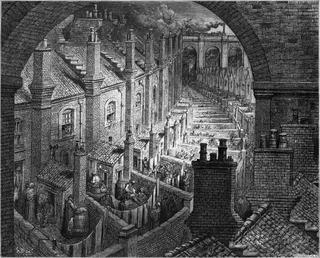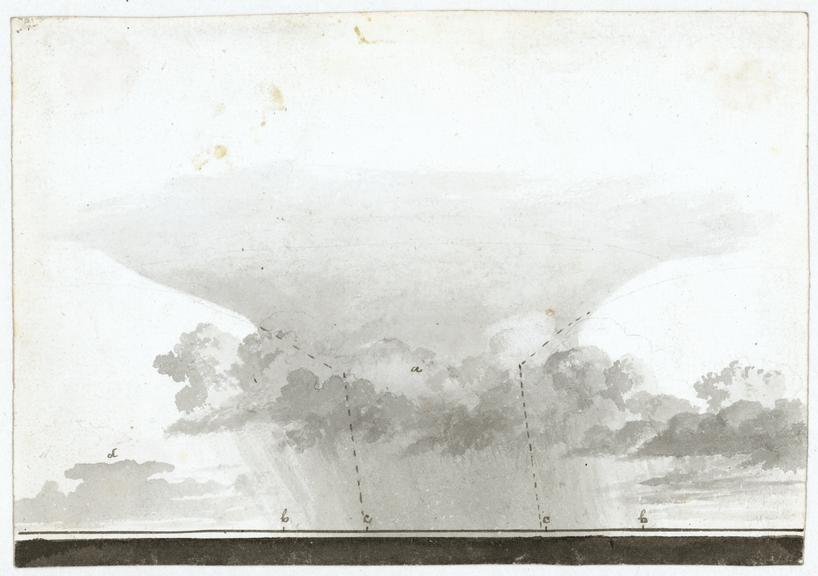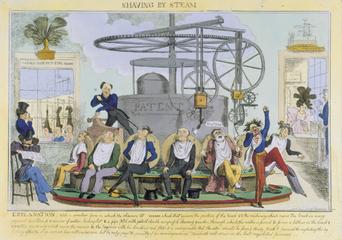
Cloud study of nimbus rainfall

Cloud study by Luke Howard, c1803-1811: Cumulus and nimbus rainfall, diagram lettered a to d. Pen and brown wash. Inscribed in pencil on verso: Bring the converging line of the (..) nearer to the dotted lines in (...) and lowr the top of it over one half beginning to (work) in (...) without altering the character
Chemist and amateur meterologist Luke Howard captured the different shapes and colours of clouds in these delicate pencil and watercolour sketches. Along with observations of height and movement, he managed the unimaginable and classified the clouds. Howard identified three basic families of clouds, using Latin names: cirrus ('curl of hair'), stratus ('layer') and cumulus ('heap' or 'pile'). He then added a further four subcategories - cirro-cumulus, cirro-stratus (nimbus) to explain the way clouds could swiftly change in appearance or join with others in the sky. Howard collaborated with the artist Edward Kennion to produce more picturesque cloud sketches for the third edition of his 'Essay on the Modification of Clouds' published in Alexander Tilloch’s 'Philosophical Magazine' in 1865.
Details
- Category:
- Art
- Object Number:
- 1981-862/29
- Materials:
- paper, watercolour
- Measurements:
-
overall (original): 129 mm x 185 mm
- type:
- drawing
- credit:
- On loan from the Royal Meteorological Society




